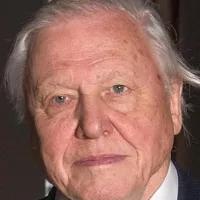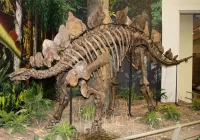1938: David Attenborough Receives Amber Specimen
Twelve-year-old David Attenborough received a piece of amber containing prehistoric creatures as a gift in 1938, which would later inspire his 2004 documentary.
1946: Transfer of Amber Deposits to the USSR
In 1946, the area containing the world's largest known amber deposits, previously part of East Prussia, was transferred to the USSR and became the Kaliningrad Oblast.
1990: Jurassic Park Novel Published
Michael Crichton's novel "Jurassic Park," published in 1990, features the extraction of dinosaur DNA from amber-preserved mosquitoes as a central plot element.
1993: Jurassic Park Movie Released
Steven Spielberg's film adaptation of "Jurassic Park," released in 1993, brought the concept of extracting dinosaur DNA from amber to a wider audience.
1999: DNA Preservation in Amber Estimated
In 1999, a projection suggested that DNA trapped in amber could potentially last up to 100 million years, significantly longer than previous estimates.
2004: The Amber Time Machine Documentary
David Attenborough presented the documentary "The Amber Time Machine" in 2004, focusing on the preservation of prehistoric organisms in amber and inspired by a childhood gift.
2013: Unsuccessful DNA Extraction from Holocene Copal
A 2013 study challenged the idea of long-term DNA preservation in amber, as researchers were unable to extract DNA from insects trapped in the much more recent Holocene copal.
2019: Surge in Species Described from Burmese Amber
The year 2019 marked a significant point in the study of Burmese amber, with over 300 new species descriptions from the Hukawng Valley deposit, bringing the total to over 1,300.
Mentioned in this timeline

Sir David Attenborough is a highly influential British broadcaster biologist...

Steven Spielberg is a highly influential American filmmaker recognized as...

Dinosaurs a diverse group of reptiles emerged around - million...
Trending

9 months ago Bobby Portis: From Turmoil to Triumph, Focused on Bucks Playoff Series

7 months ago Rebel Wilson: Emergency Plastic Surgery After On-Set Accident During 'Bride Hard' Filming

2 months ago Lindsey Vonn's record-breaking career, teaching older athletes, and Milan Olympics ad.
3 months ago Kansas Jayhawks face UCF Knights: Sorsby's performance crucial in Big 12 matchup.

8 months ago Mikaela Shiffrin Releases Final Episode of "Moving Right Along" Web Series
The Winter Olympic Games a major international multi-sport event held every four years features sports practiced on snow and ice...
Popular

Stranger Things created by the Duffer Brothers is a popular...

XXXTentacion born Jahseh Dwayne Ricardo Onfroy was a controversial yet...

Kelsey Grammer is an accomplished American actor producer and singer...

Candace Owens is an American conservative political commentator and author...

Bernie Sanders is a prominent American politician currently serving as...

Melania Trump a Slovenian-American former model has served as First...
